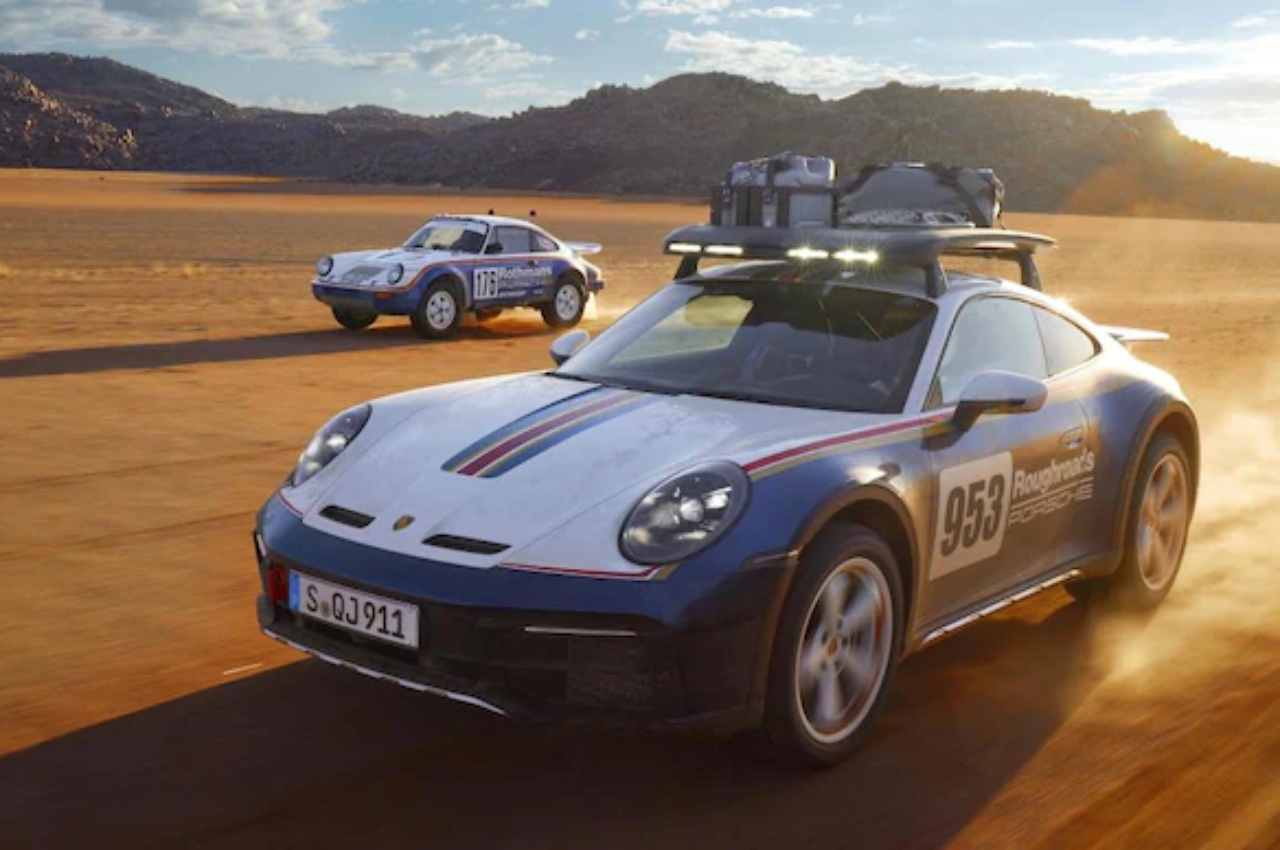New Delhi: Porsche took the covers off its new 911 Dakar at the Los Angeles Auto Show. The 911 Dakar is a heavily modified version of the company’s flagship coupe, the 911, and is designed to offer fast off-road pace with minimal compromise in its on-road capabilities.
Porsche built the 911 Dakar not only as a tribute to, but also as a spiritual successor to, its 1984 Paris-Dakar Rally winner, the 911 Safari. In 2018, Autocar India was the first to report that Porsche could produce a facelifted 911.
Porsche 911 Dakar: Exterior and Interior
The 911 Dakar has undergone a lengthy development process, debuting in prototype form at the Nürburgring more than two years ago. It features a radical exterior modeled after the most extreme off-road vehicles available. These include red aluminum towing eyes at the front and rear, significantly widened wheel arches and protective steel plates on the front, rear and side sills.
Other exterior highlights include a carbon fiber reinforced plastic rear spoiler, a boot lid lifted from the lightweight GT3 and an optional roof rack with 12V socket for LED lights.
Porsche will offer the 911 Dakar in an exclusive Shade Green color scheme, but customers can also choose the optional Rally Design Package, which brings the signature two-tone white-blue paintwork with red and gold stripes, modeled after the famous Rothmans livery of the Dakar winner. .
Inside, the 911 Dakar ditches the rear seats to keep things light and comes with bucket seats up front, along with an optional anti-roll bar, six-point seat belts and a fire extinguisher.
Porsche 911 Dakar: Powertrain, chassis improvements
The 911 Dakar is the closest relative to the all-wheel-drive Porsche 911 GTS, sharing its twin-turbo 3.0-liter flat-six with 480 hp, 570 Nm and an 8-speed dual-clutch automatic transmission. This enables the 911 Dakar to accelerate from 0 to 100 km/h in just 3.4 seconds. Porsche has made significant modifications to the chassis and bodywork of the 911 Dakar, making it completely different from its standard sibling.
The off-road-ready sports car sits 50mm higher than the 911 Carrera S and can be raised a further 30mm, further increasing ground clearance and increasing its approach and departure angles. Porsche claims that the suspension is “not just for low-speed obstacle driving” but can be used at speeds of up to 170km/h for “ambitious off-road adventures”.
The brand also equipped the 911 Dakar with purpose-built Pirelli Scorpion All-Terrain Plus tires with 9mm deep treads and super-stiff reinforced sidewalls. Porsche claims that despite their off-road focus, the tires enable engaging dynamics on the road; Also, Pirelli P Zero tires will be available as an option for everyday driving on the road.
The 911 Dakar features rear-wheel steering, engine mounts from the GT3 and active roll control. The car also has two new driving modes – Rally, which sends most of the power to the rear axle and is designed for loose, uneven surfaces, and Off-road, which places the suspension at full height and distributes power evenly between the front and rear axles. Both modes offer a new Rally Launch Control feature that maximizes acceleration on loose terrain.
Porsche’s future plans
Porsche is currently working on an all-electric SUV that will sit above the Cayenne and take on EV SUVs like the BMW iX. The new electric SUV will be based on Volkswagen Group’s Scalable Systems Platform (SSP), just like the third-generation Panamera. The company aims for pure electric cars to account for 50 percent of its global sales by 2025 and 80 percent by 2030, but has yet to confirm launch dates for pure electric equivalents of the 911 sports car and Cayenne SUV.










